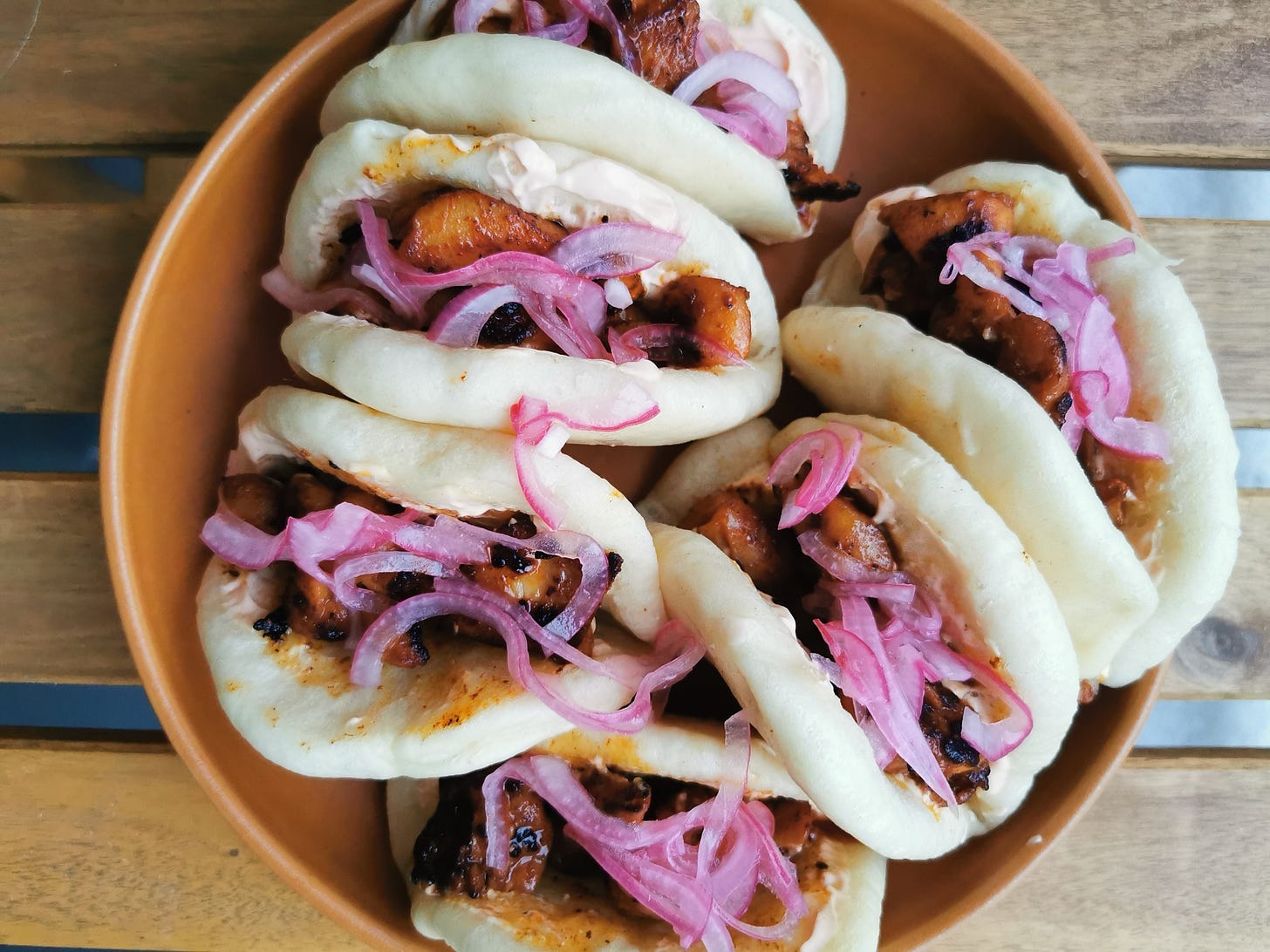When it comes to eating at home alone, I would ordinarily write about how sad it is that nearly 60% of Americans eat solo. I would analyse the cultural reasons for why that is. I would probably throw about phrases like “the loneliness pandemic.”
Whilst by and large I believe in the communal ritual of eating, life isn’t always as simple as finding a tribe to eat with every night. Especially a tribe you actually want to eat with.
Some people live alone. Some people prefer the company of the TV to their own family and depending on the family, that could be justified.
For the last two months, I’ve eaten alone. My husband is working harvest and learning how to be a winemaker in the Dão region of Portugal. It’s nearly two hours south of our home thus too far to commute, so he’s been living at the winery.
I stayed in Porto which means for the first time in 15 years, I’ve had to learn how to cook for one.
My past solo dinners have been nothing to write home about. Usually they consist of a quick fridge forage and making some sort of weird pasta dish filled with every vegetable nubbin in the crisper.
What is the point — I would think — in making anything elaborate or interesting when it’s just me? I might as well save the more interesting meals for company, be that my husband, friends or family.
Friends, one cannot live off weird pasta dishes for two months. So I went back to cooking in my usual style.
Except now, it’s just for me.
Over the last two months, two dishes have stood out as champions of my solo eating journey.
The first is pizza. The second is Bao buns.
Both these dishes are traditionally not made for one person. If you have ever delved into the world of pizza, you will know that the more bulk there is in the dough, the better it will prove.
But I don’t want to make pizza for 15, I want to make it for one. I want to be Kevin McAllister and not share.

And Bao buns? If you’re going to the trouble of making them, you want to make more than just a couple, right?
It turns out both recipes, with a little tweaking, are knocked up far quicker than you’d think and with much less effort than you’d expect. And they both work well as single portions.
This week, I’m tackling Bao buns. Next week, pizza.
Most Sauce recipes are a paid subscriber perk and these will also be behind the paywall. I’ve got a 30% off offer running until the end of September. $3.50 a week or $35 a month for everything The Sauce has to offer, including these recipes:
If you’re not familiar with Bao buns, they are Chinese steamed rolls filled with myriad toppings from chicken to tofu to barbeque pork.
Traditionally, Bao buns are made with bleached flour and have a sweetness to them that is, in my experience, not to everyone’s liking.
I have to admit, I’ve changed the recipe to be more Western-pantry-friendly. Let’s call them Bao-inspired buns.
Because I also believe every ingredient in your pantry should have more than one purpose, I use white stong bread flour for the buns. We’ll use the same for pizza next week.
I’ve also reduced the sugar content.
When it comes to the toppings, there are more variations than I could ever capture but the one I go to repeatedly is chicken or tofu in a Gochujang marinade with hot mayonnaise and pickled onions.
Gochujang is a Korean fermented chilli paste easily found online, if not at a local Asian store. I use it nearly every day to make marinades for crispy chickpeas, in stir fry sauces, or in dipping sauces for dumplings.
As for the hot mayonnaise, you could make your mayonnaise from scratch and I would applaud you if you do. I however, do not. I use Kewpie mayonnaise (an increasingly popular Japanese brand) and mix in a little hot sauce.
Bao-inspired buns
Serves one
Keep reading with a 7-day free trial
Subscribe to The Sauce to keep reading this post and get 7 days of free access to the full post archives.






